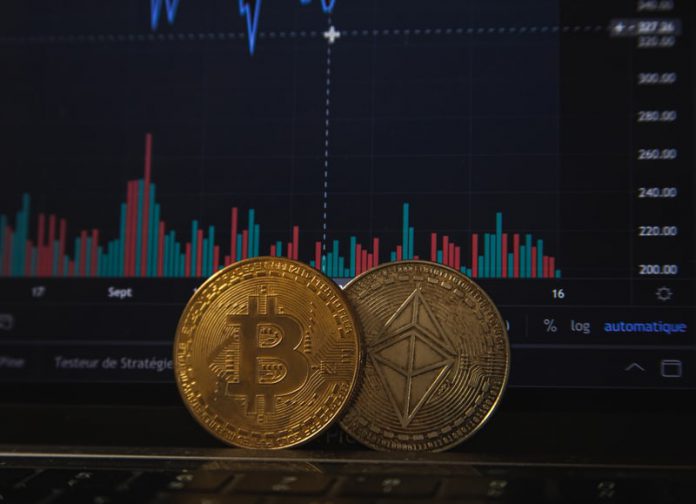With the rise of cryptocurrencies showing no signs of slowing down, the growth of central bank digital currencies (CBDC) appears to be another trend on the ascendancy. Will 2022 prove to be a red-letter year for CBDC adoption?
As governments globally lean into new financial technologies, there has been a growing crossover between governments and digital currencies. One of the biggest developments in 2021 saw El Salvador make Bitcoin a legal tender in the country – a big step forward for the cryptocurrency, and a move the El Salvadorian president Nayib Bukele described at the time ‘would make it easier for Salvadorans living abroad to send money home’.
One key challenge for the adoption of CBDCs may be apprehension on the side of everyday consumers who are unsure of adopting digital currencies. A recent study by card issuing platform Marqeta found that 30% of respondents didn’t like the idea of the state tracking their digital currency while 27% didn’t understand how CBDCs would impact them.
However, 2021 proved to be a huge year for the CBDC market. Developing countries such as Nigeria, Thailand, Bhutan, Korea and Singapore all revealed plans to conduct CBDC pilots or studies, with the last four set to conduct their pilots in 2022. In the case of Nigeria, the country launched its CBDC – eNaira – for a pilot study in October.
The Bank of England revealed in November that it intends to launch a consultation to set out their assessment of the case for a CBDC in 2022. Earlier in the year, UK Chancellor of the Exchequer Rishi Sunak told the BofE to look at the case for a potential ‘Britcoin’ or CBDC and established a BofE taskforce.
The Hong Kong Monetary Authority also stated in 2021 that it had begun the first steps of exploring a CBDC with the release of a technical whitepaper that examined the possibility of a ‘e-HKD’, with an initial viewpoint expected by the half way point of 2022.
There is also rising industry debate on the topic of digital currencies, with a McKinsey report stating last year that CBDCs will create ‘inevitable changes’ to the payments landscape.  The report also underlined that regulators in countries with dramatic reductions in the use of cash are preparing strategies to ensure continued availability of central bank currency – subsequently driving increased attention towards CBDC use.
In addition, a joint report from J.P Morgan and Oliver Wyman predicted in November that up to $100bn annually could be saved in transaction costs through a CBDC network. Meanwhile, finance officials from the G7 previously endorsed 13 public policy principles for retail CBDCs.
Following a strong 2021, the CBDC market is looking ahead to 2022 with the wind at its back. Kicking off the year, China’s central bank launched its CBDC wallet app on the Android and Apple app stores – a development that had been in the works since 2014. The digital yuan had undergone extensive field testing – with the pilot handling transactions up to $5.34bn as of June last year.
There are also plans for the Central Bank of Brazil to start a pilot program of a digital currency this year. However, a firm date has not been set on this yet. Jamaica also recently completed a CBDC pilot and has said it expects to roll out the CBDC in the first quarter of this year.
How will the explosion in CBDC usage impact the financial system and countries as a whole? According to Rahul Singh – president of financial services for HCL Technologies – the watchword is centralisation.
He said, “The use of CBDCs firmly entrenches centralisation, which cryptocurrencies have fought hard to distance themselves from. What happens when the government’s computers switch off? Or what if the government decides to limit withdrawal of your savings?
“Also, users of the currency will have to trade-off some privacy to enable authorities to find people who are acting fraudulently – which is a slippery slope of legal, regulatory and humanitarian issues. This year we will discover whether decentralization, reinforced with immutable trust and unique identity that crypto and blockchain technologies offer, opens a path to a frictionless future for most monetary transactions.â€
The issue of centralisation with CBDCs was also echoed by Kristjan Kangro – CEO and founder of crypto investment platform Change – compared to the more decentralised nature of crypto. He remarked, “The decentralised nature of crypto is a key component of what makes this technology so powerful. Decentralisation places control into the hands of the people rather than in the hands of traditional financial institutions.
“Ultimately, decentralised finance will enable millions of people worldwide who are currently locked out of the global financial economy to meaningfully take part. This creates a huge opportunity to reduce poverty and improve the quality of life for many. CBDCs, however, will simply continue to keep the financial system inaccessible to all but a select few.
“It’s worth noting though that CBDCs come in a lot of flavours. Central banks across the world are experimenting in different types of digital currency with different levels of anonymity, scope and underlying technology. These experiments have had mixed results. However, what’s certain, is that without a global approach backed up by consistent, international regulations, it’s difficult to see how CBDCs could replace cryptocurrencies in the short-term.â€
Despite this, there is still positivity towards CBDCs and the opportunities they can provide for governments and consumers in the digital age. Crown Agents Bank CEO Bhairav Trivedi commented, “Over the past few years or so, there has been increasing speculation around CBDCs.
“With digital currency, central banks don’t need to print cash or hold physical money. Currently, countries can print as much money as they like, resulting in problems like paper waste but also hyperinflation. Using a controlled digital currency could eliminate this problem. We have seen interest in CBDCs rise drastically in 2021 and while I can’t forecast what will happen in the year or years to come, CBDCs are the way forward”.
Copyright © 2022 FinTech Global











